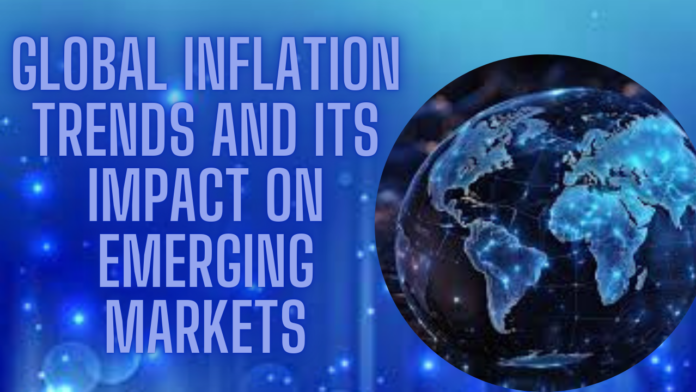Introduction to Global Inflation
As we step into 2024, the shadow of inflation looms large across global economies. The escalating global inflation rates are not just numbers on a chart; they represent shifts in purchasing power, altered lifestyles, and challenges for businesses and consumers alike. As prices continue to rise at an unprecedented pace, emerging markets find themselves navigating uncharted waters. Understanding these intricate dynamics is crucial as countries grapple with rising costs and devise strategies to protect their economic stability. Join us as we explore current trends in global inflation and how they ripple through developing nations, affecting everything from consumer behavior to investment strategies.
Current Inflation Trends in Major Economies
Inflation continues to be a hot topic across major economies. The global inflation rate in 2023 saw spikes, particularly in the United States and Europe. Rising energy prices and supply chain disruptions played significant roles.
In contrast, some Asian economies reported more stability. Countries like Japan maintained lower rates due to unique monetary policies aimed at combating deflation.
Central banks worldwide are responding differently. While the Federal Reserve pushed for interest rate hikes, others focused on maintaining growth amidst rising costs.
Consumer sentiment is also shifting as households adjust spending habits based on inflation forecasts. This change reflects deeper concerns about long-term economic stability amid fluctuating global inflation rates in 2024.
Emerging markets are feeling these pressures acutely, navigating their challenges while attempting to sustain growth against a backdrop of escalating costs and financial uncertainty.
Factors Contributing to Rising Inflation Rates
Rising inflation rates can often be traced back to several interrelated factors. Supply chain disruptions have taken center stage, especially in the wake of the pandemic. When goods are harder to obtain, prices inevitably climb.
Additionally, energy costs play a significant role. Fluctuations in oil and gas prices directly impact transportation and production expenses. Higher fuel costs send ripples through multiple sectors, contributing to overall price increases.
Another critical element is monetary policy. Central banks around the globe have adopted aggressive measures to stimulate economies post-crisis. While these actions aim for growth, they can inadvertently lead to excessive money supply and soaring inflation levels.
Labor shortages also contribute significantly. As businesses struggle to fill positions, wages rise as companies compete for talent. This increased labor cost often translates into higher consumer prices for products and services across various markets.
Impact of Inflation on Emerging Markets
Emerging markets are particularly vulnerable to fluctuations in global inflation rates. When inflation rises, purchasing power often diminishes swiftly. This poses a significant challenge for households reliant on fixed incomes.
Higher commodity prices can lead to increased production costs for local businesses. Many of these enterprises struggle to pass those costs onto consumers without risking reduced sales volumes.
Additionally, rising interest rates aimed at curbing inflation can stifle economic growth. Borrowing becomes more expensive, making it difficult for small and medium-sized enterprises to invest or expand.
Currency depreciation is another concern. As investors seek stability elsewhere, emerging market currencies may weaken further against stronger counterparts. This creates a vicious cycle that exacerbates the cost of imports and fuels domestic inflation even more.
The socio-economic fabric may fray as well, with increased inequality and unrest becoming possible outcomes in countries struggling to manage rising prices effectively.
Strategies for Managing and Mitigating Inflation in Emerging Markets
Emerging markets face unique challenges when tackling inflation. Policymakers must adopt a multi-faceted approach to manage rising prices effectively.
One strategy involves tightening monetary policy. By increasing interest rates, central banks can curb excessive spending and stabilize the currency. This helps maintain investor confidence during turbulent times.
Another crucial tactic is enhancing supply chain resilience. Investing in local production capacities reduces dependency on imports, which can be vulnerable to price fluctuations.
Governments may also consider targeted subsidies for essential goods. This aids low-income households while preventing drastic inflationary spikes in everyday items.
Moreover, fostering financial literacy among citizens empowers them to make informed decisions about savings and investments during inflated periods.
Diversifying investment portfolios with assets like real estate has proven effective as these often retain value amidst soaring inflation rates. These strategies combined could pave the way for more stability in emerging markets facing economic pressures.
Case Studies: Examples of How Countries are Dealing with Inflation
Countries are employing various strategies to combat rising inflation. For instance, Brazil has introduced interest rate hikes to stabilize its economy. This approach aims to curb spending and encourage savings among consumers.
In contrast, Turkey is navigating a different path by implementing price controls on essential goods. While this may provide temporary relief for citizens, it raises concerns about potential shortages in the market.
India is focusing on enhancing supply chains and increasing agricultural output. By addressing these foundational issues, the government hopes to reduce food prices that heavily influence inflation rates.
Meanwhile, South Africa is exploring partnerships with private sectors to tackle energy costs effectively. Such collaborations aim at boosting efficiency while managing inflationary pressures stemming from high utility bills.
Each nation faces unique challenges but demonstrates resilience through innovative approaches tailored to their specific circumstances.
Conclusion: The Future of Global Inflation and its Effect on Emerging Markets
The future of global inflation remains uncertain, yet its implications for emerging markets are increasingly clear. As global inflation rates for 2023 and projections for 2024 continue to fluctuate, these economies must navigate a landscape marked by volatility.
Emerging markets are particularly vulnerable to shifts in global inflation due to their reliance on external capital flows and commodity prices. With rising inflation often leading to tighter monetary policies in developed nations, the resulting capital outflows may exacerbate economic instability in these regions. The ongoing battle against inflation will require prudent fiscal measures and innovative financial instruments like emerging market inflation-linked bonds.
Countries witnessing high levels of consumer price increases can look towards various strategies that have proven effective elsewhere. For instance, investing in infrastructure or enhancing agricultural productivity can improve resilience against food price hikes. Furthermore, real estate is gaining traction as an attractive hedge against soaring prices—a trend many investors might consider amid rampant inflation.
As policymakers grapple with the challenge of maintaining growth while controlling prices, collaboration among governments and international organizations becomes crucial. Coordinated efforts can help stabilize currencies and create pathways for sustainable development even during turbulent times.
Navigating this complex environment will require adaptability from both governments and businesses within emerging markets. Continued monitoring of global trends will be essential as stakeholders seek solutions tailored specifically to their unique circumstances—ensuring they emerge stronger despite the looming challenges posed by fluctuating global rates of inflation.


